Read Reviews
The Best Multi-Purpose Compost
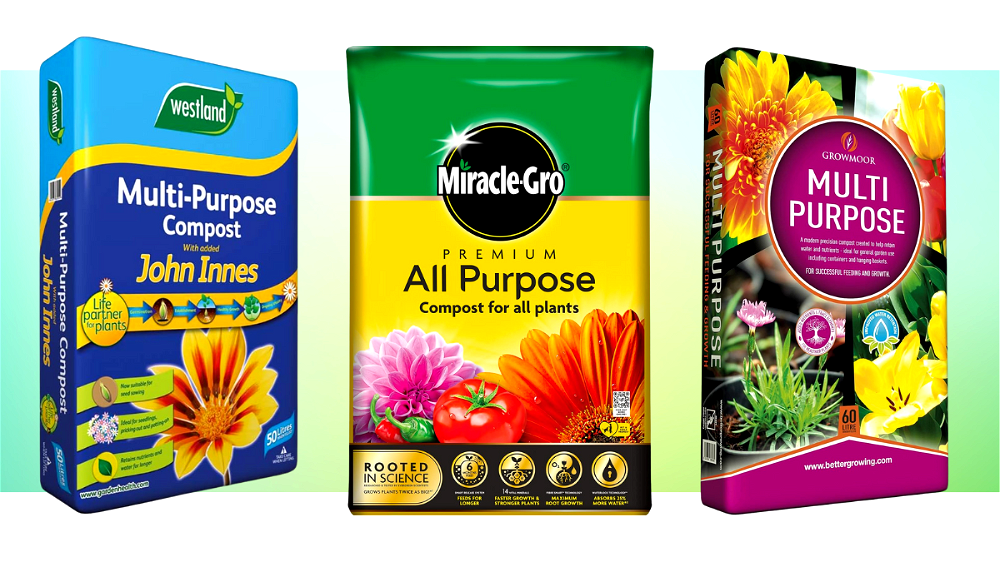
-
Miracle-Gro 119761 All Purpose Compost
-
Growmoor Multi-Purpose Compost
-
Westland 50L Multi-Purpose Compost with John Innes
-
J. Arthur Bowers Multi-purpose Compost 2 x 50L Bags (100L)
-
Scotts Levington Multi Purpose Compost 70 Litres
Multi-Purpose Compost Reviews
- Can be used in pots and hanging baskets to great effect
- Drains well
- Should keep for up to a year provided it’s stored correctly
- Wood fibres allow the right amount of air and water into the soil to prevent waterlogging
- Contains 14 vital minerals including a good NPK balance
- Quality of compost can vary between batches
- Can dry out if not stored correctly - try to make it as airtight as you can
- Contains peat
The Miracle-Gro 119761 All Purpose Compost is suitable for use in all areas of the garden, adding nutrients to flower beds, hanging baskets, pots and containers. It’s available in either a 40 L or 50 L bag and offers great value for money.
For reference, the 50 L bag contains enough compost to fill four large patio pots and three hanging baskets.
In terms of the compost itself, it contains 14 vital minerals to create a rich compost that also drains well. It contains nitrogen, phosphorus and potassium as expected, alongside 11 trace elements which help to maintain the health of plants.
Containing smart release granules, this compost will only work when the growing conditions are optimal, e.g., warm and moist. This allows for the most efficient absorption of minerals, and can feed plants for an entire season – up to six months at a time.
The compost’s ‘waterlock’ technology is also designed to absorb 25% more water than ordinary compost, helping plants to stay hydrated. It has both good water retention and offers good drainage.
The consistency of this compost makes it easy to work with. It’s very smooth, and has a fresh smell to it with a crumbly texture. The most important thing is to make sure it’s not able to dry out. In storage, ensure it’s as airtight as possible and it should last for up to a year.
Be aware that this compost is not peat free – although the pack does claim that the compost is using 50% less peat. If you’re looking for products with zero peat content, you’ll want to look for a completely peat-free alternative.
Overall, this is one of the best multipurpose composts on the market. It offers great value for money and has been put together by a reputable brand who certainly know a thing or two about plant health. The only real downside is that it’s not peat-free, so it depends where you sit on the ‘to peat, or not to peat’ issue.
Did you find this review helpful?
- Highly absorbent so holds water very well
- No bark bulking it out and acting as filler
- Fine textured compost good for more delicate plants
- Available in a range of bag sizes to suit your garden and storage
- Contains peat which many gardeners prefer to avoid
Produced from high quality peats, with the addition of fertiliser, this Growmoor Multi-Purpose Compost does a great job improving the health of plants. It’s available in several sizes, from small 10 L bags up to large 80 L options.
Containing a nutrient-enhanced formula as well as a wetting agent, this compost is suitable for the majority of plants, including those in containers and hanging baskets. It’s highly absorbent, so is intended to hold water and nutrients for longer, helping stop plants from drying out. It contains a relatively even blend of nitrogen, phosphate and potassium, helping encourage both root development and flowering.
The texture of this compost makes it easy to use. It’s good quality, dark, rich and relatively fine. The fine texture ensures it lets plenty of air in and doesn’t compact around plants like thicker composts. There are no wood chips or twiggy particles that are often used to bulk out compost, which makes this one of the best multi purpose composts for seedlings and potting.
As mentioned, this compost does contain peat. According to Growmoore these Moss Peats come from “ecological managed licensed peat bogs and not from any SSSI” (a site of specific scientific interest).
Did you find this review helpful?
- Can be used at any stage of a plant's development
- Compost is generally smooth with no large lumps
- Included food fibre is sourced from FSC certified forests
- Compost may be a little dry and require rehydrating
- Quality of this compost seems to vary between batches
- Contains peat (in reduced amounts) which many gardeners prefer to avoid
This Multi-Purpose Compost with John Innes can be used at any life-stage of the plant: whether it’s germinating or waiting to flower. It delivers a good mix of nutrients and is suitable to be used for up to five weeks.
The texture is relatively neutral – not too sandy or soggy, and there are some additional components included, like wood fibre. The wood fibre comes from FSC certified forests which means it’s been sustainably grown/sourced.
There is also some peat in the mix, which more and more gardeners are looking to avoid; however, it is considered a ‘reduced peat’ compost, so they have gone to measures to keep the peat content down.
According to some customers’ experiences, this compost can deliver mixed results depending on what’s being grown – it seems that it can help broad beans, carrots and peas to thrive, but may not be as effective on tomatoes, peppers and aubergines.
Overall, this is one of the best composts featured if you want a good combination of larger and smaller particles in your compost. These can help with drainage and stop the compost from compacting. With this Westlands option, it’s also nice to know that FSC certified wood is used.
The 50 L bag is substantial and reasonably priced. It offers enough nutrients to help with the growth of most plants at any stage of their development – it just might take a bit of trial and error to find the plants that don’t get on with this compost.
Did you find this review helpful?
- Crumbly texture that does not form a lot of clumps
- Practical size bags make it easy to carry compost around whilst working
- Allows sufficient air in and doesn't overly compact around plants
- Contains peat (although in reduced amounts)
For a good value compost, that will help give young plants a boost, this J. Arthur Bowers Multi-Purpose Compost offers two bags at a reasonable price and provides all the nutrients plants need for their first 4-6 weeks.
It contains nitrogen which helps leaves and shoots grow, as well as phosphate for root development and potassium to encourage flowering and fruit.
In terms of the compost itself, it has a pleasant airy texture and doesn’t clump easily – any small lumps that do form are easily and quickly broken up with the fingers. There are few ‘filler’ materials used, like bark, and the overarching opinion seems to be that it’s a quality compost.
It has good water retention as well as efficient drainage, and doesn’t compact around plants of become overly dense.
Also, the fact that you get 100 L overall, but not in a heavy 100 L bag, makes it more practical to use in the garden. It’s a lot easier to carry around a 50 L bag rather than lug about larger sacks.
Overall, it’s one of the best composts to use if you’re after value for money. It’s a good quality product, in a size that’s easy to manage, and you still get a lot for the price.
The only downside is that it is not completely peat free – the problem with this is that using up natural peat reserves is bad for our ecosystem. Whilst this compost does contain reduced amounts of peat, there is still some present.
Did you find this review helpful?
- 70 L bag is sufficient for filling 70 small pots, 14 medium pots, or 10 hanging baskets
- Has potential to be used as a grow bag as well as compost
- Slimline bag design makes it slightly easier to carry than wider sacks
- A good density for potting up
- Can contain a high amount of recycled materials such as wood, ceramic and stones
- Contains peat
If you’re working to a budget, this Levington Multi Purpose Compost is a low-cost option that gives you 70 L of compost.
It can be used at any stage of a plant’s development, including seed sowing, and the large bag is sufficient for filling approximately 70 small pots (12 cm diameter), or 14 medium pots (22 cm in diameter).
Suitable to use for up to six weeks, this compost retains water well and doesn’t get too compacted. It contains a combination of recycled materials to help with aeration, although it seems that the quality of these materials can vary. There may be wood, stones, and ceramic included, amongst other materials.
As a large bag, it also has the potential to be used on its side as a grow bag, if required.
When used for conventional compost you will likely need to decant it into a smaller container, rather than moving the whole bag, as it is quite heavy and hard to manage. However, the bag does have a ‘slimline’ design which makes it a little easier to pick up.
All things considered, this is one of the best composts to buy on a budget – it may not have the same quality as some other composts featured here, but it is still from a trusted brand and you get a lot for your money.
Did you find this review helpful?
Product Tester
How to Choose The Best Multi-Purpose Compost
Compost is organic material that can be added to plants to improve their health. Whilst making your own compost is a great option for reducing food waste, pre-bought bags can help anyone get started with composting.
Multi-purpose compost is versatile and suitable for most gardens, it generally provides all the nutrients your plants need for healthy growth. Whilst multi-purpose compost tends to be a good all-rounder, there are other types of compost available to suit specific soil types and plants- worth bearing in mind before you make a purchase.
READ NEXT: What is Ericaceous Compost?
If you reckon multi-purpose is the way to go, there are just a few things to bear in mind when looking for the best compost for your garden:
Benefits of Using Compost
Whilst we all know that compost is good for plants, it may not be so obvious as to why (check out this page on the incredible benefits of composting).
Seeing as compost is made up of decayed organic material, it has a lot of great nutrients in it. The three main nutrients, which are often present in shop-bought fertilisers as well, are nitrogen, phosphorous and potassium.
Using compost helps improve the condition of the soil, and help with pH imbalances. It also works to maintain moisture levels and boost the general health of plants.
READ NEXT: The Best Soil pH Testing Kits
Another benefit is that the microorganisms introduced to the soil will also help your plants to repel a number of plant diseases.
Compost can often be used at many different intervals along the life of your plant, from encouraging seeds to germinate, to aiding with repotting plants, or persuading plants to flower.
Of course, composting is also good for the planet. Creating compost at home in a compost bin is a great way to recycle kitchen and garden waste.
Ingredients in Compost
Multi-purpose composts contain a range of nutrients and minerals to help plants thrive. However, you should note how long the compost will continue to nourish your plant for. Most multi-purpose composts will provide nutritional value for around three months.
The key ingredients to look out for are nitrogen, phosphorous and potassium. Broadly speaking, nitrogen helps with leaf growth, phosphate is for a strong root development, and potassium will encourage flowering and fruiting.
Sometimes there will be additional ingredients like seaweed; seaweed contains a lot of micronutrients that are beneficial to both the aesthetic appearance of the plant and its general health.
There may also be other materials present, like bits of bark or stones. This can vary from compost to compost. The inclusion of larger materials can stop the compost from becoming too compacted, and can help with drainage and aeration. However, it can also just demonstrate that the manufacturer isn’t very careful with sieving the compost, and it’s not uncommon for budget composts to have a higher density of large material.
Finally, whether or not compost contains peat is a matter of interest, and contention, for many gardeners. Given that it’s such a polemic issue, you’ll find that the next section is dedicated to the pros and cons of peat-based compost.
Peat vs Peat-Free Compost
Traditionally, a lot of composts contained peat – it’s high in nutrients and works wonders on plants. However, the negative effects of harvesting and using peat have become more evident in recent years.
First, a little background on peat, in order to truly understand the problem. Peat is made from partially decomposed bog plants – that’s why it’s so nutrient rich. These plants have been compressed down which locks up all the carbon that they’ve absorbed in order to grow. Peatlands can actually store and absorb a lot of carbon dioxide, keeping it out of the air. Ultimately, they do a valuable job towards helping with climate change.
When peat is dug up, to be used as compost (or for other reasons), the store of carbon is disturbed and released into the atmosphere. This is the first downside of harvesting peat – especially on a commercial scale.
When peat is spread over the garden, its carbon content turns into carbon dioxide over time – not great news when trying to keep the release of greenhouse gasses to a minimum.
Finally, peat bogs offer a unique and rich ecosystem for lots of animals. Once this environment is disturbed, it is extremely difficult to recover it. Due to the way peat is formed, it is very hard to recreate or restore a peat bog.
So, where does that leave us with compost?
Well, peat-based compost is still readily available, but a lot of gardeners are choosing to avoid it as much as possible for the above reasons.
Many manufacturers are attempting to lower the peat content in their compost, due to its negative impact on the environment. However, if the compost doesn’t state that it’s ‘peat free compost’ or at least ‘low in peat’, you should presume that it has a high peat content.
There’s a range of peat-free compost on the market, although some gardeners feel they are not as effective as composts containing peat. Peat-free compost generally contain wood-based materials such as wood fibre, sawdust or bark.
Peat-free compost also tends to be more expensive because there is more processing involved than simply digging up peat.
Now you have the facts, you can make your own informed decision about compost.
How Much Compost to Buy
Compost can come in some pretty large sacks, some of which may well be too large for standard gardening jobs.
The composts featured on this page come in bags ranging from 50 – 70 L. For context, a 50 L bag can weigh 12 kg + (it depends somewhat on the composition of the compost).
Whilst a lot of composts are sold in 100 L bags, these may not be practical for some people in the garden. They can weigh anywhere from at least 25 – 30 kg.
A lot of gardeners find 50 L bags a lot more manageable, although of course they may not offer such good value for money.
The most important thing to be aware of is not buying a bag that will be completely impossible to move. Even though a lot of delivery drivers will be helpful enough to carry the sack to the back gate or shed, you will likely still have to carry it some way yourself.
While compost can be stored indefinitely, it does begin to lose some nutrients after four months. After one year of storage, the compost may be sufficiently lacking in nutrients to make it not worth using. Therefore, it’s a good idea not to buy more than you need.
READ NEXT: Where Can I Dispose of Old Compost?
Multi-Purpose Compost FAQs
Compost can be used in a variety of ways; in its simplest form, it can be simply raked into soil and spread near plants. Finely-textured compost can even be sprinkled over newly sown grass seed on the lawn.
- If you want to sow seeds in a tray, you can use compost as the potting medium to give them a boost. Plant the seeds according to their instructions, and water the compost after sowing them.
- For repotting, use compost to fill in the space between the plant’s roots and its new larger flowerpot.
- For growing cuttings, fill a pot with compost, make holes using a dibber, and place the cuttings in the holes, pressing the compost around it. The process of taking cuttings from plants can vary, so check that you’ve followed an additional instructions before planting the cutting in compost.
- Compost can also be used as the potting medium in hanging baskets.
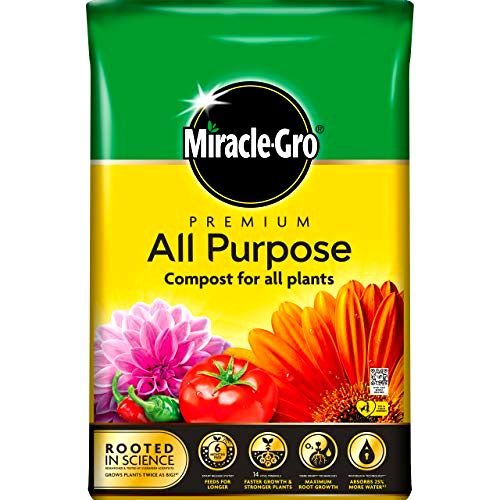
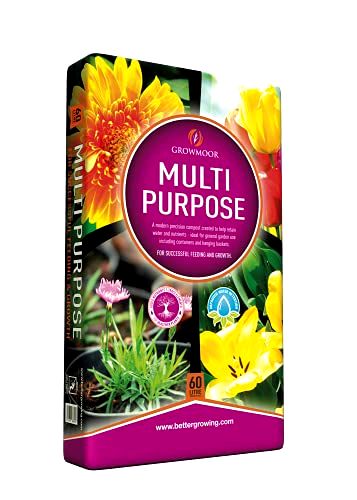
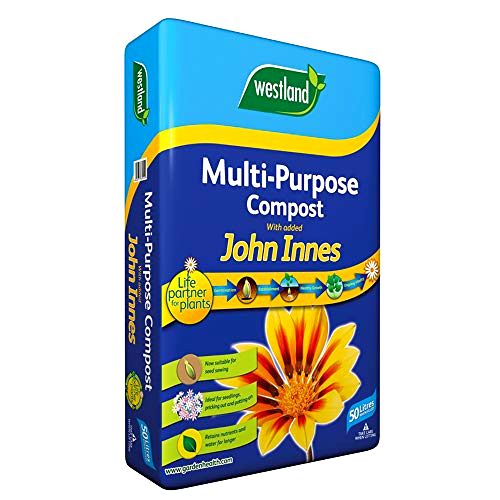
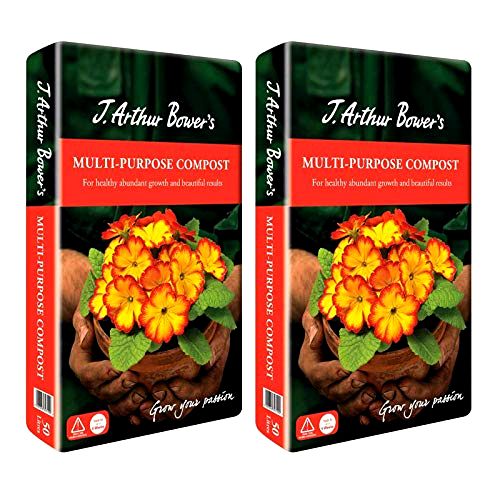
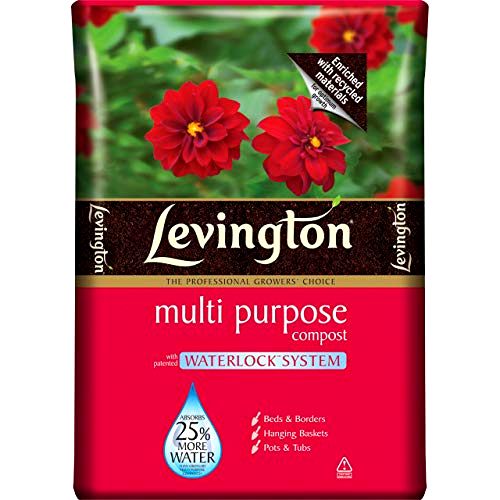

Share